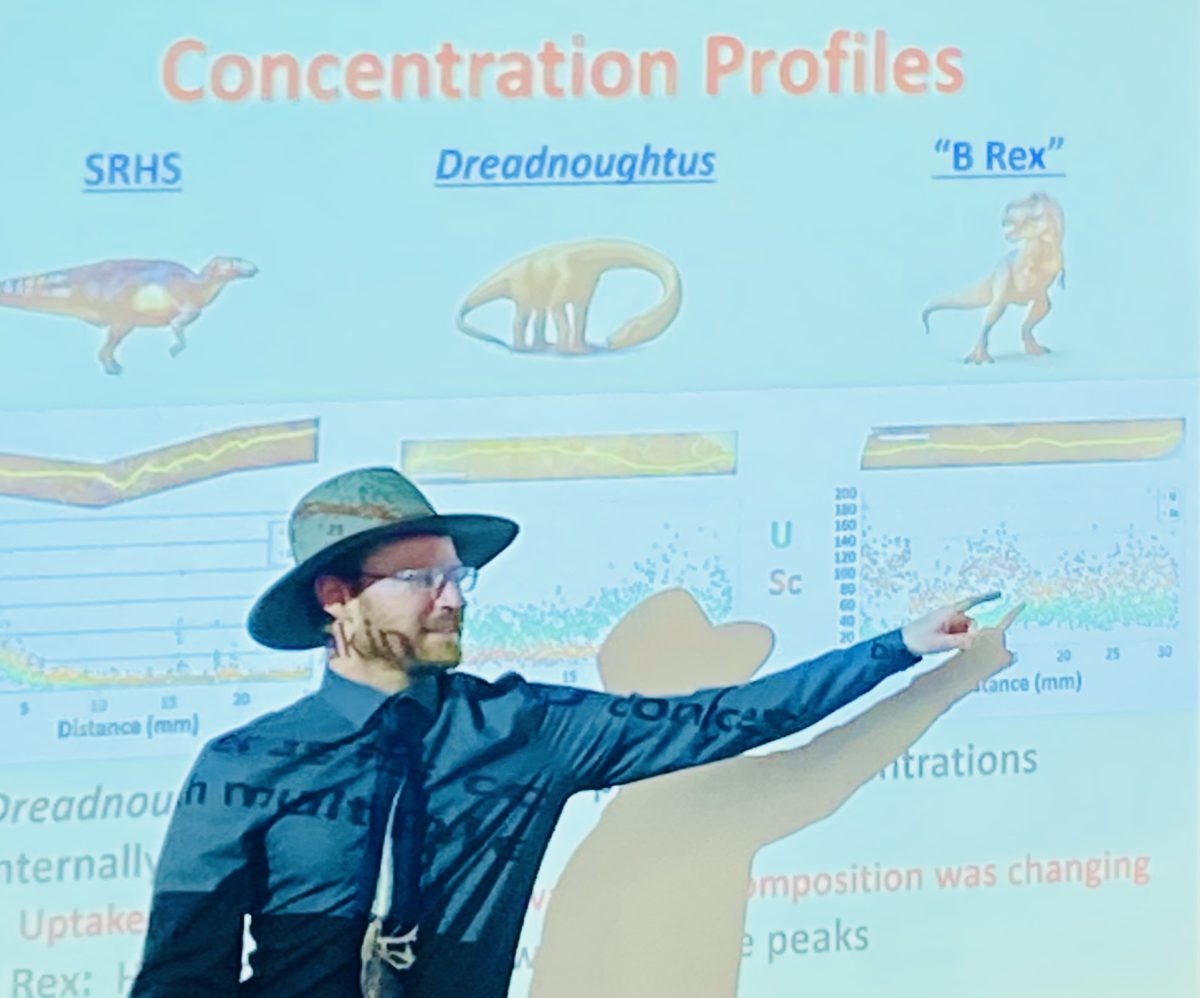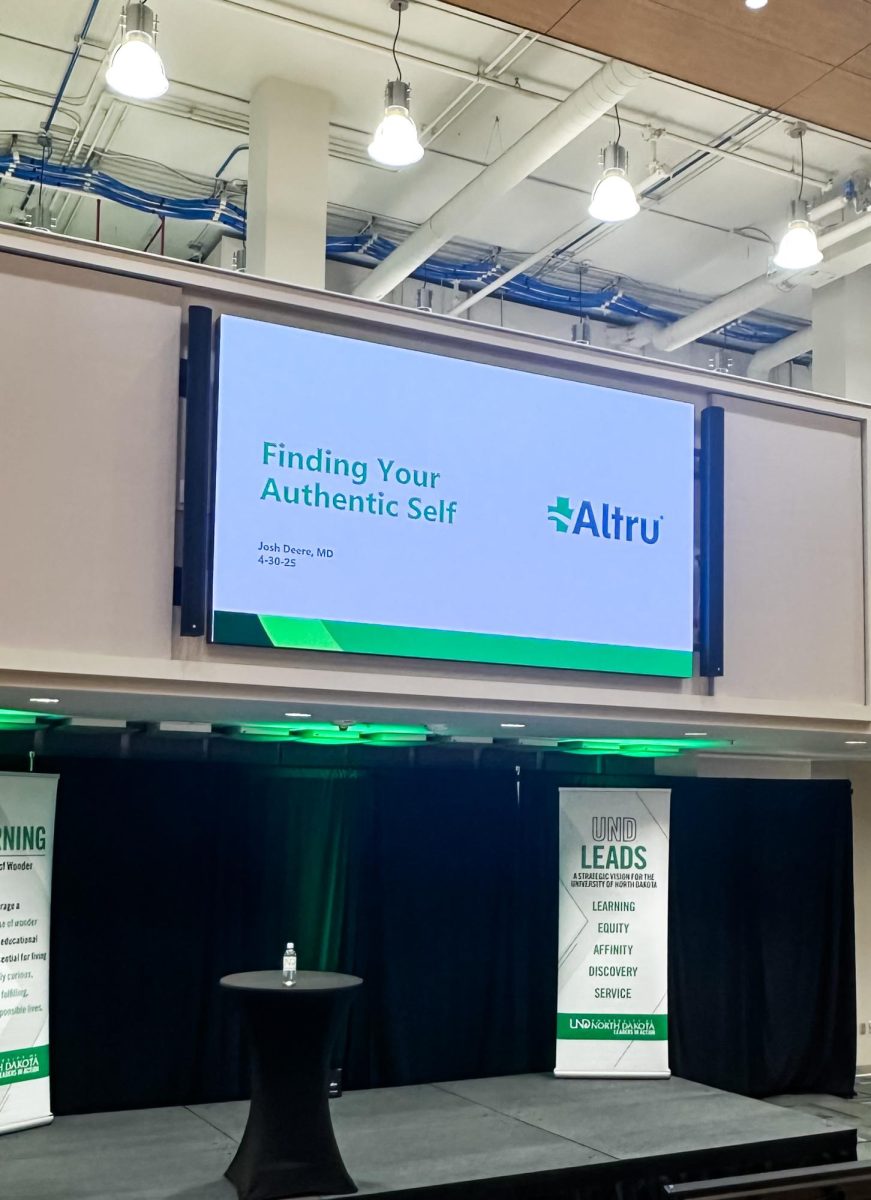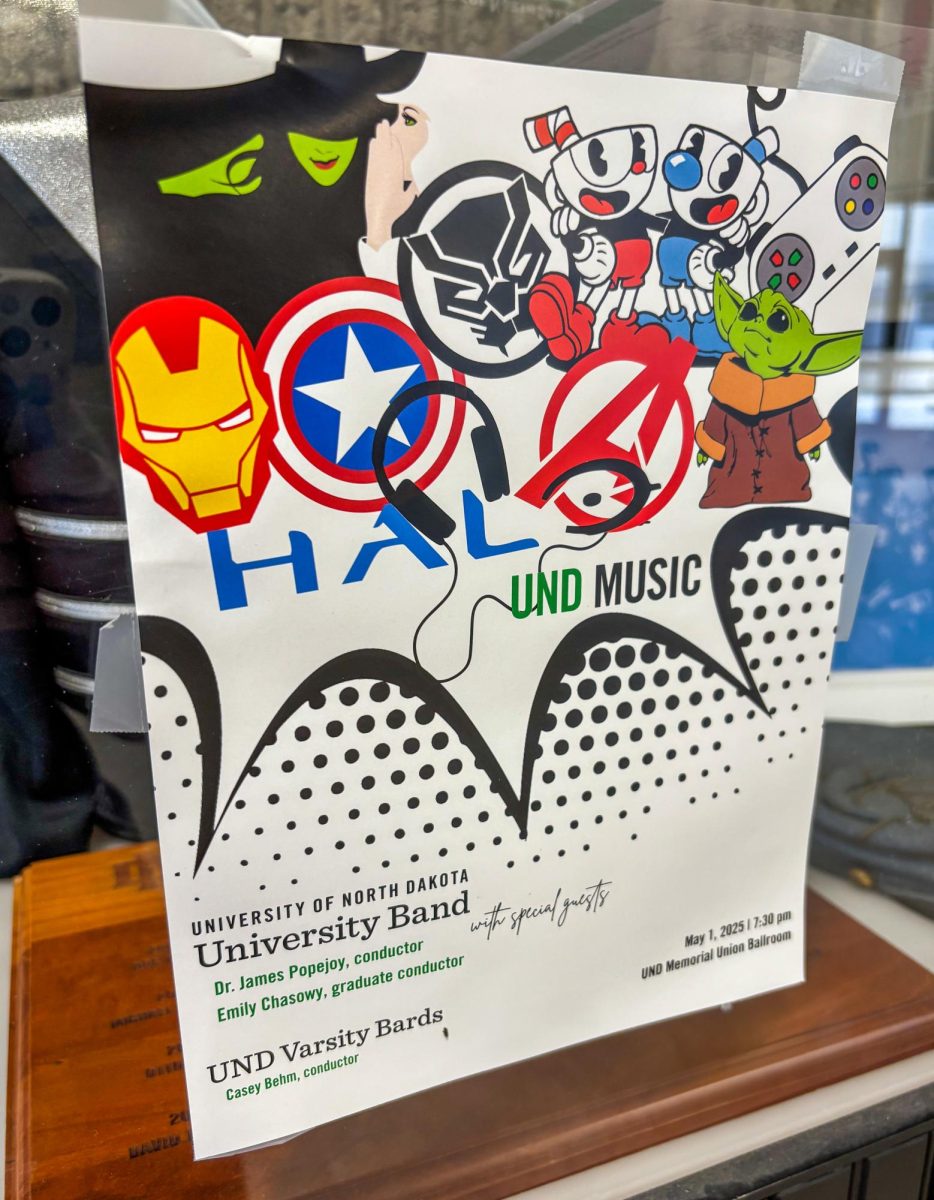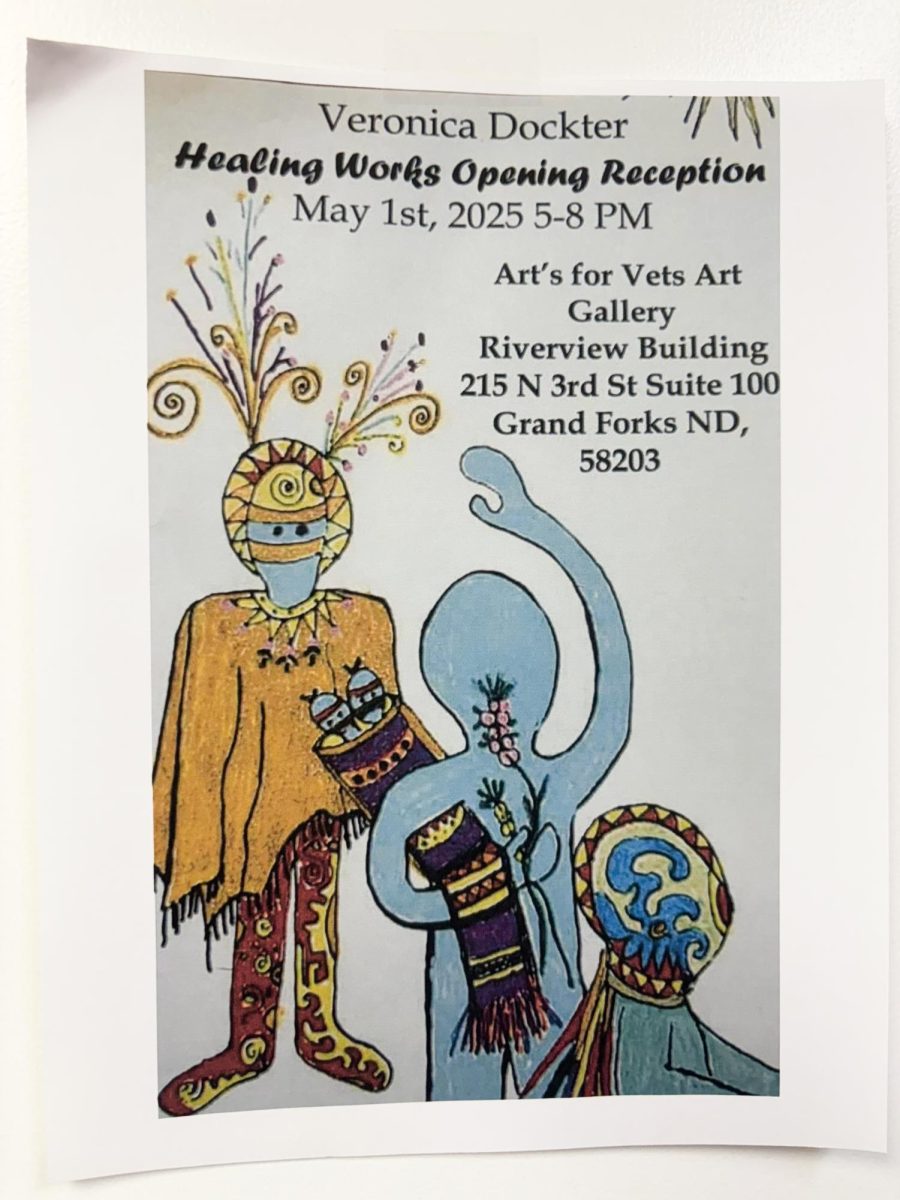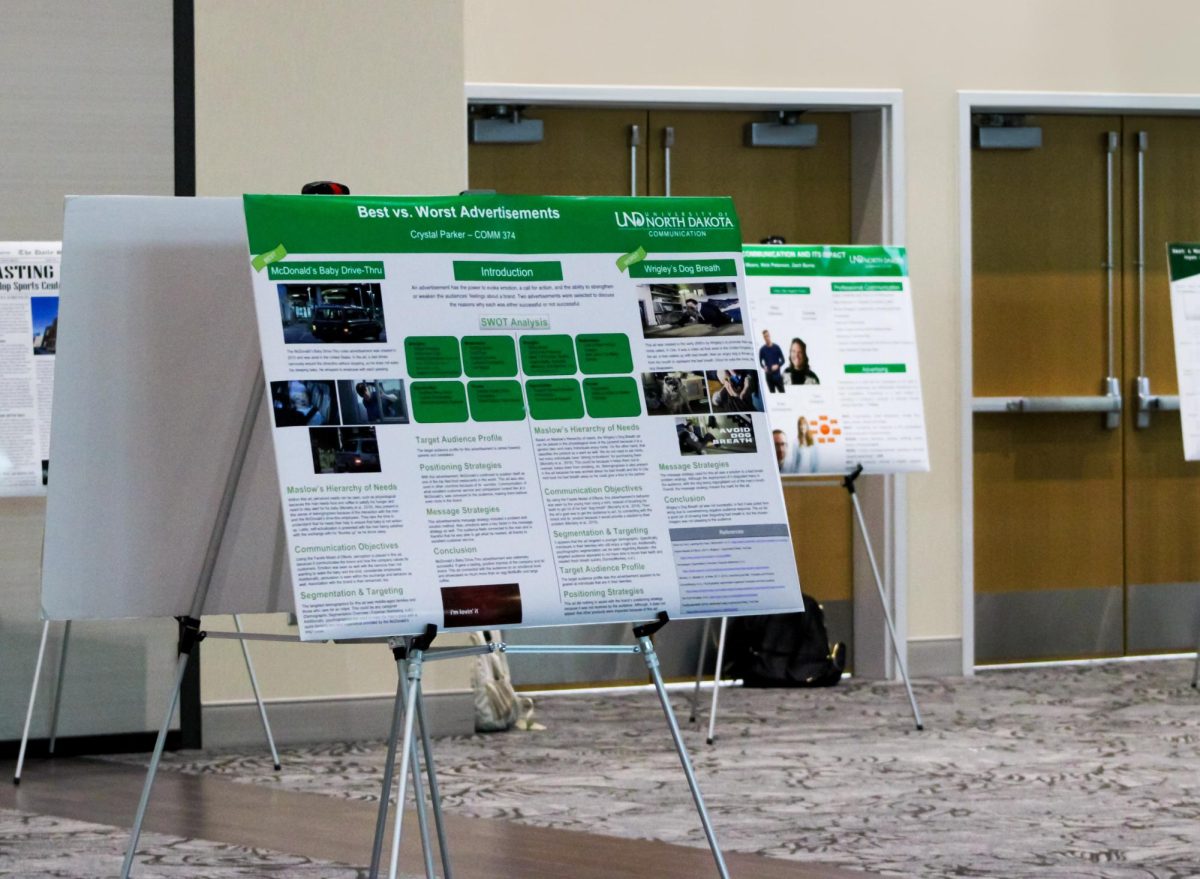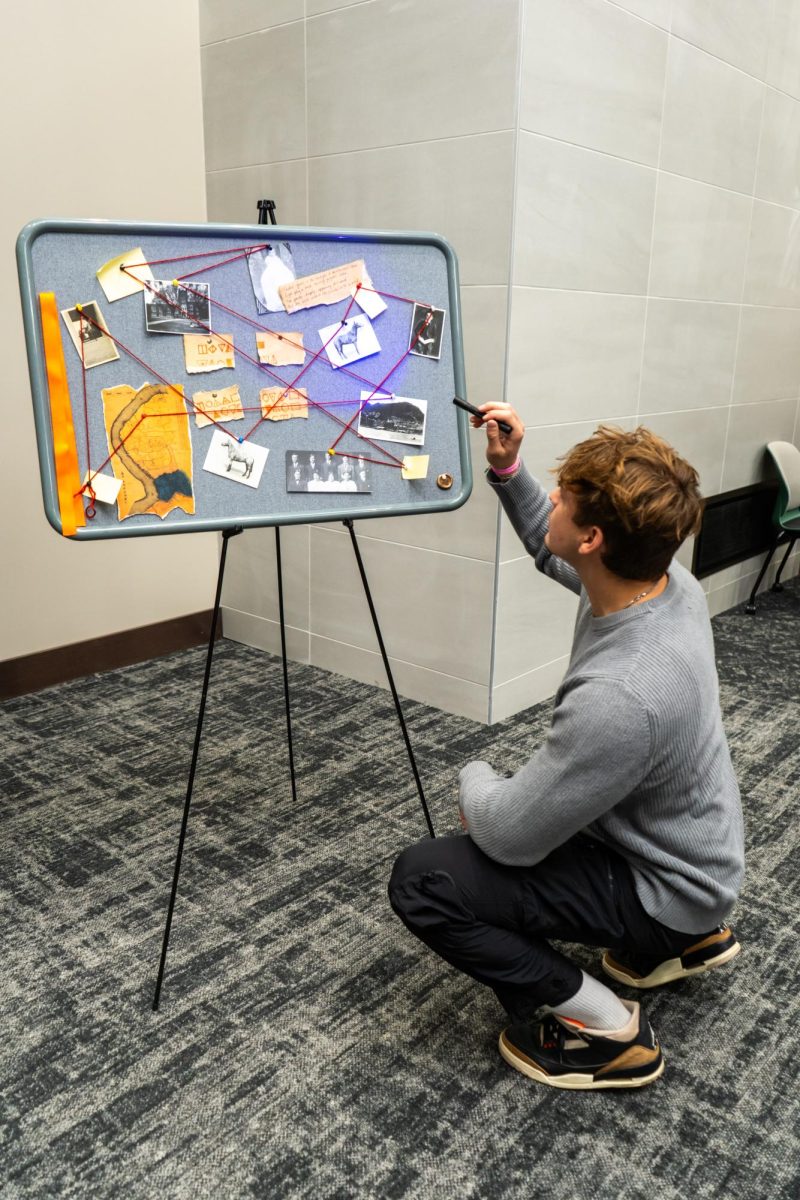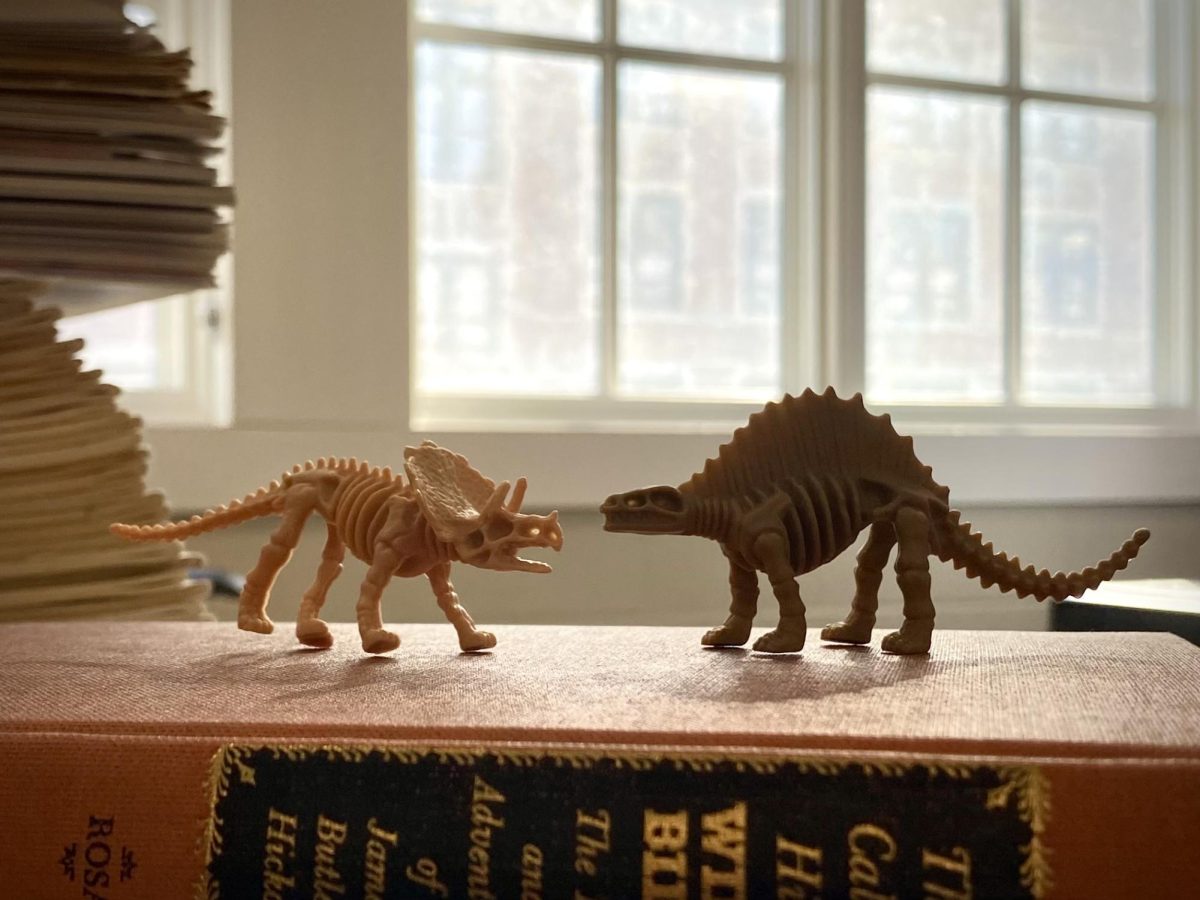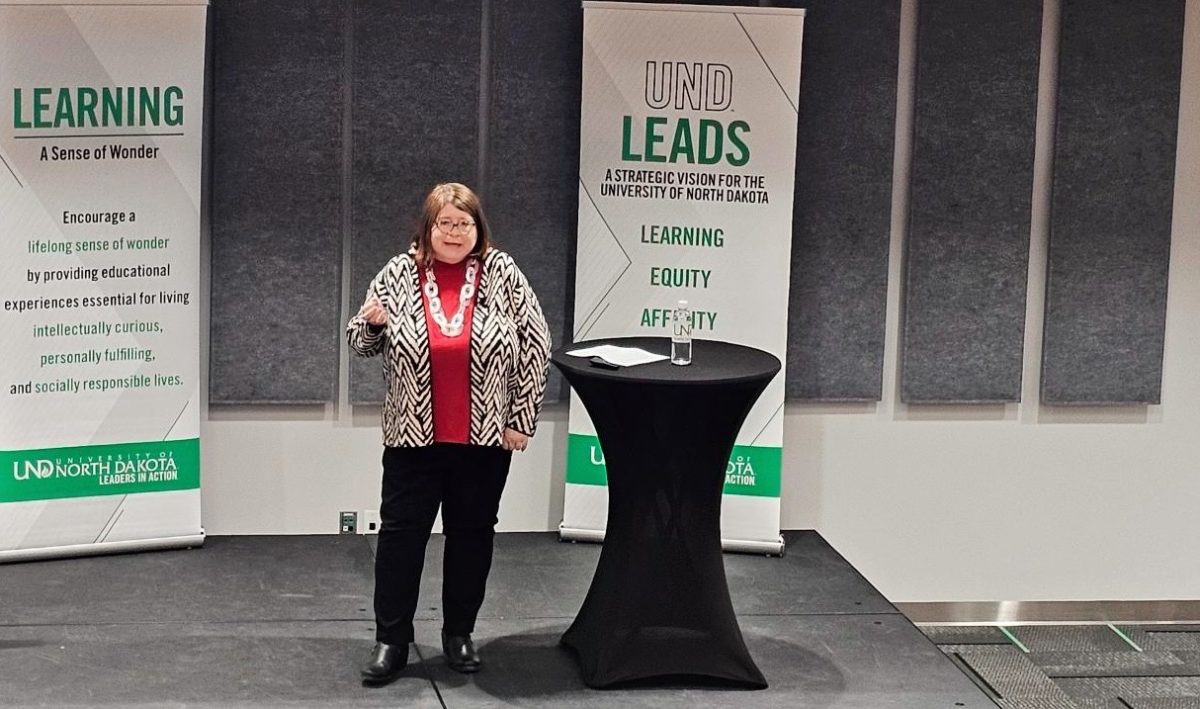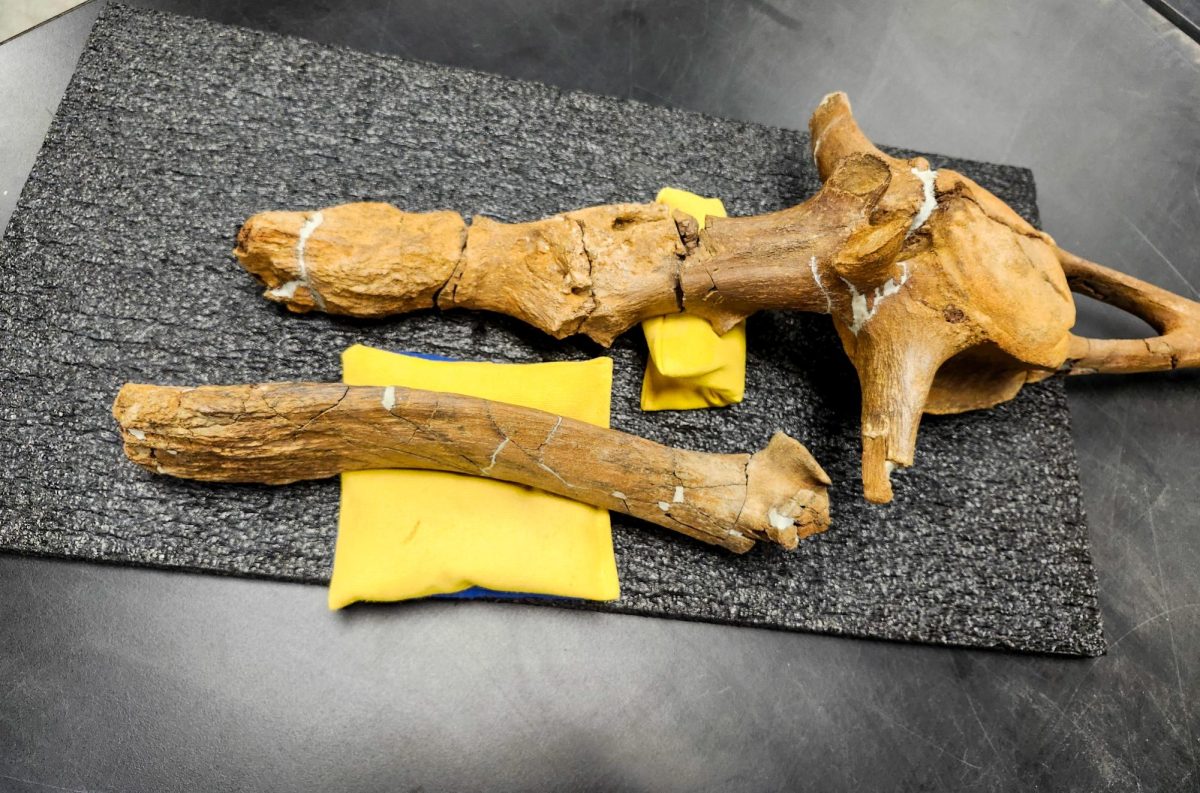The Chester Fritz Library concluded its dinosaur hunt on April 3 with a much anticipated Randy Rasmussen Memorial Lecture on molecular paleontology. The respected orator, decked out in a broad fedora and a necktie with a fossil on it, captivated the electric crowd of 50 for nearly an hour with fascinating data and entertaining explication. The librarians and Chester Fritz staff ought to be commended for the classy venue and delightful desserts, including intricately decorated dinosaur cookies. The event was enjoyable enough to be considered a midweek highlight. If you missed it and have an affinity for dinosaurs, closeted or otherwise, here are a few takeaways to elevate your paleontological knowledge.
First, the speaker, Dr. Paul Ullmann, is a vertebrate paleontologist who specializes in dinosaurs and the study of fossilization processes. He is also the newest faculty addition to UND’s Harold Hamm School of Geology and Geological Engineering. Originally from Florida, he earned his Bachelor’s in Geology at Montana State and his PhD at Drexel University in Philadelphia. This fall, he will begin offering Geology 112, “Discovering Dinosaurs!” a new course that will satisfy essential studies requirements for all majors. He is passionate about his field and is actively helping to add a paleontology concentration to our geology degree.
The talk was titled “Dinosaur Molecules: Exploring How Soft Tissues and Biologic Molecules Can Persist in Dinosaur Bones.” How, indeed? It is a question most folks do not ponder unless perhaps they are watching Jurassic Park. Dr. Ullmann began with a brief lesson on bone structure, pointing out the many organic components among the mineral structures. In fossilization, the minerals in bones are the ones, “carrying the team,” so to speak, because they withstand millions of years a lot better than the biologic materials do. Remarkably, as Dr. Ullmann explained with his research, there are examples of preserved organic structures in fossilized dinosaur discoveries today.
His past research has included studies to identify collagen, a protein, in dinosaur specimens. He displayed magnified frames of isolated compounds identified by a fluorescent green binding agent. The enthusiastic paleontologist presented the data, though substantial, in a digestible manner so that even the children in the crowd probably retained at least as much as this reporter did. His quirky delivery suited an amusing remark he made about mammoths. While explaining the extreme length of time between the demise of mammoths and that of the specimens he studies, he exclaimed, “A mammoth’s not a fossil! That’s a dead body!”
Dr. Ullmann transitioned the focus of the talk to the potential implications of his field of study and what could be applied beyond paleontology. Unsurprisingly, any additional understanding of molecular decay is welcome in many disciplines, including energy and medicine. Further data on environmental factors contributing to fossilization could lead to predictions about the future, geologically speaking. This application relates to Dr. Ullmann’s current research, for which he provided the audience with a crash course in geochemistry to explain. Finally, though still hypothetical, another application of his study is molecular evolution, the stuff of science fiction. The professor maintained that there is yet no preserved proof of recognizable dinosaur DNA and wasted no time debunking mosquitoes in amber as a feasible source. The audience responded promptly with a collective groan of disappointment.
And finally, he concluded the lecture with an intriguing invitation to the community to participate in some hands-on paleontology experience. In a statement after the presentation, Dr. Ullmann explained, “my graduate student, Skyler, and I are working with students, staff, and community volunteers on a duck-billed dinosaur skeleton, and we have a little bit of a triceratops as well, to clean the bones and to glue the pieces back together and prepare it for research. We’re doing that every Friday afternoon from 2 to 6 p.m.”
The volunteer slots are limited, necessitating a scheduled sign-up system. If interested, use the following link to sign up: https://blogs.und.edu/cem/2024/02/a-once-in-a-lifetime-opportunity-volunteer-to-help-bring-a-dinosaur-to-life-at-und/.
This Rasmussen Memorial Lecture was successful in providing accessible education on a unique topic. Not only was a partnership between the geology department and the librarians beneficial to those seeking knowledge about dinosaurs, but it also presented opportunities for community elevation along the way. The promotional efforts of the CFL staff leading up to the talk revealed a surprising level of interest and excitement regarding dinosaurs among students, and the talk itself allowed a new faculty member an opportunity to introduce himself and his passion to the community. It was altogether a subtle triumph in the eyes of this reporter.
Quindelynne Davis is a Dakota Student General Reporter. She can be reached at quindelynne.davis@und.edu.


